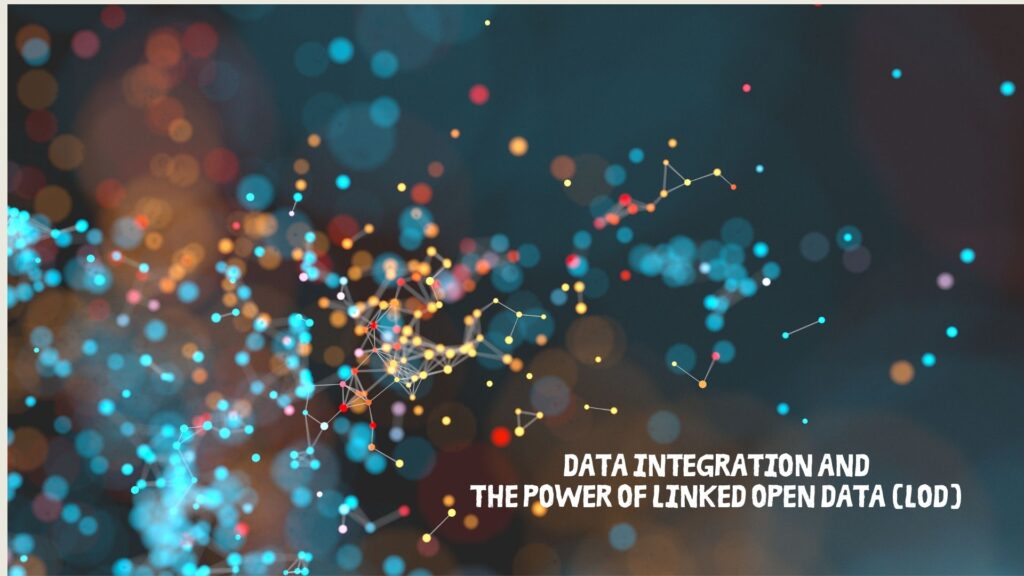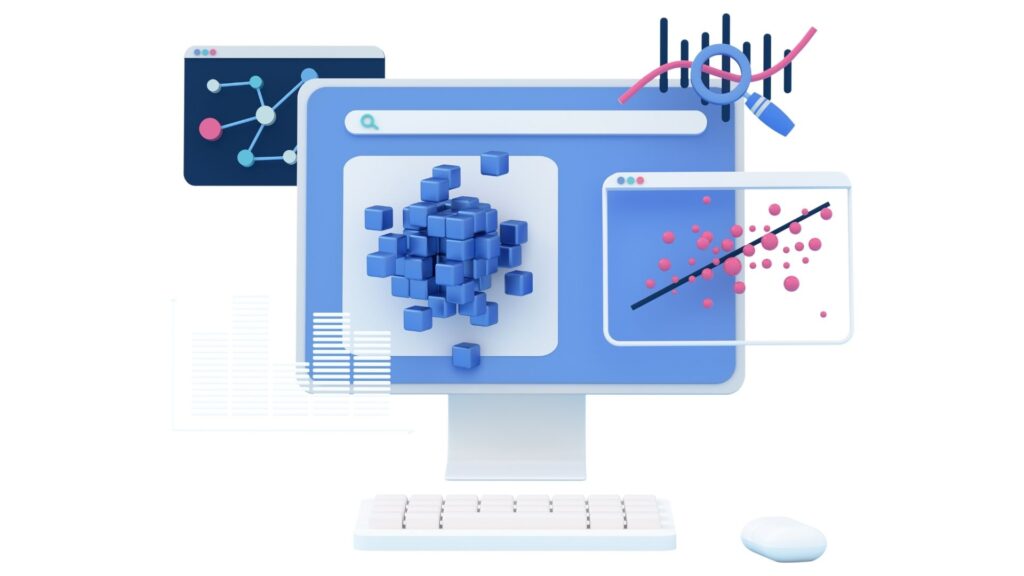
Google’s Knowledge Graph is a revolutionary technology that transforms the vast wilderness of the internet into a structured oasis of facts, entities, and interconnected relationships. At its core, the Knowledge Graph is a sophisticated database designed to enhance your online search experience by understanding the nuances and context of your queries. It achieves this monumental task by cataloging information into entities-the fundamental units of knowledge, akin to the atoms of human understanding.
Each entity within the Knowledge Graph is enveloped by a cloud of verifiable facts and tethered to others through a rich tapestry of relationships. This isn’t just about recognizing names and numbers; it’s a comprehensive framework that identifies and associations-linking historical figures to their inventions, books to their authors, and countries to their capitals-essentially emulating the interconnectedness of human insight.

To further refine this intellectual ecosystem, structured data plays a crucial role by labeling website content in a language that Google’s Knowledge Graph can effortlessly decode. This meticulous organization allows search algorithms to present you with succinct summaries and elegant knowledge panels that turn information retrieval into a seamless and intuitive discovery. Knowledge is power, and Google’s Knowledge Graph puts it at your fingertips.
Ready to unlock the power of Google’s Knowledge Graph? Get in touch with TBS Marketing today for a complimentary consultation.
The Inner Workings of Google’s Knowledge Graph
At the core of Google’s Knowledge Graph lies a sophisticated combination of technologies and methodologies that together create a dynamic system for understanding and organizing the world’s information. Let’s take a closer look at how it functions.
Role of Schema.org in Standardizing Structured Data
Schema.org plays a critical role in the Knowledge Graph’s ability to effectively parse and understand information across the internet. By providing a common vocabulary that webmasters can use to mark up their pages, Schema.org enables the seamless categorization and retrieval of structured data. This markup helps Google and other search engines to comprehend the content of a page and its relevance to specific queries, thereby enhancing the precision of information found within the Knowledge Graph.
The Integration of Data from Various Sources to Enrich the Knowledge Graph
Google’s Knowledge Graph is not built from a single source; rather, it is an amalgamation of data gleaned from various trusted authorities, public databases, and the broader web. These diverse data points are meticulously integrated to construct a broad, yet detailed, view of entities and the connections between them. This extensive integration ensures that the Knowledge Graph remains a comprehensive resource with a richness and depth that is constantly expanding.
How Machine Learning Optimizes Data Retrieval and Result Accuracy
Machine learning stands as a cornerstone of the Knowledge Graph’s efficiency, driving both the retrieval of data and the accuracy of the results it delivers. Through advanced algorithms, the systems can learn from user interactions, patterns in data, and language semantics. This continuous learning process allows Google to refine its predictions about what information users are seeking and to provide the most relevant and accurate answers. The application of machine learning makes the Knowledge Graph an ever-evolving tool that adapts to the nuances of human language and inquiry, ensuring that users are met with meaningful search experiences.
The Evolution of Search: From Keywords to Entities
The landscape of search has undergone a paradigm shift with the advent of Google’s Knowledge Graph, marking the transition from traditional keyword-based search to a more nuanced and intelligent semantic search technology. No longer does a search engine merely match keywords; it now understands the essence of user queries and provides rich, contextual responses.

Transition from Keyword-Based Search to Semantic Search Technology
Initially, search engines operated on a relatively simplistic principle, relying on the frequency and placement of keywords within a webpage to determine relevance to a user’s query. This method, however, had its limitations, with searches often returning literal matches that lacked depth or context. Semantic search brought a revolutionary change to this model by focusing on determining the meaning behind the words, thus paving the way for a more sophisticated interpretation of search queries.
Understanding Entity Recognition in the Context of Google’s Knowledge Graph
At the heart of the shift towards semantic search is the concept of entities. Entities are distinct and unique objects or concepts that exist in the world, such as people, places, or things, that can be distinctly identified. Google’s Knowledge Graph excels at recognizing these entities within a user’s search query, drawing from an extensive database of information to form connections and understand relationships between entities. This capability is fundamental in delivering search results that are accurate, relevant, and richly informative.
How Knowledge Graph Interprets a Query’s Intent
Google’s Knowledge Graph has transformed how search engines interpret the intent behind queries. Instead of simply scanning for keywords, the Knowledge Graph uses natural language processing and sophisticated algorithms to grasp the searcher’s intent. This approach allows for a nuanced understanding and delivery of results that align closely with the user’s expectations. Whether the query is about a historical figure, a local restaurant, or a complex scientific concept, Google’s Knowledge Graph seeks to present the most relevant and authoritative information available.
By embracing the interplay between keywords and entities, Google’s Knowledge Graph provides users with experiences that are not just informationally accurate, but contextually synergistic – an evolution that continues to shape the future of search.
How Google’s Search Algorithms Utilize Knowledge Graph
Insight into how Google’s search algorithms interact with the Knowledge Graph. Google’s search algorithms are sophisticated systems designed to retrieve the most relevant and accurate information in response to a user’s query. At the heart of these algorithms is the Knowledge Graph, which enables Google to understand and organize information about entities and their relationships in a way that reflects how knowledge exists in the real world.
The influence of Knowledge Graph data on search results. When a search query is made, Google’s algorithms consult the Knowledge Graph to identify entities and facts related to the query. By doing so, it distinguishes between different meanings and contexts. For instance, searching for “Jaguar” could mean the animal, car brand, or sports team, and the Knowledge Graph helps determine the most contextually appropriate results.
How algorithms prioritize information based on relevancy and accuracy. Relevancy is paramount when it comes to search results. Google’s algorithms assess the authenticity of content and its correlation to the query by cross-referencing with the data within the Knowledge Graph. This process ensures that users are presented with information that is not only precise but also contextually suited to their search intent. The Knowledge Graph’s vast repository of facts, relationships between entities, and understanding of user intent all contribute to a more accurate and refined search experience.
Knowledge Panels: Showcasing Information in Search Results
Knowledge Panels are a distinctive feature in Google’s search results, delivering instant, factual information tailored to a user’s query. They appear typically on the right side of the search results page and serve as a quick snapshot of data on various subjects such as famous personalities, businesses, landmarks, and more.
What are Knowledge Panels, and How Do They Present Data?
Knowledge Panels are generated by Google’s Knowledge Graph and aim to provide a concise and highly visual summary of information that users are searching for. They pull relevant data, images, and links, offering users a trusted overview without the need to click through multiple web pages.
The Process of Sourcing Information for Knowledge Panels
Google’s sophisticated algorithm sources information for Knowledge Panels from various trusted and authoritative web sources, including Wikipedia, CIA World Factbook, and structured data from the websites themselves. The selection process is meticulously designed to ensure that the information presented is both accurate and comprehensive.

The Impact of Entities and Their Relationships on Presented Results
Entities and the relationships between them play a crucial role in populating Knowledge Panels. Google’s Knowledge Graph understands the semantic context and connections between entities, which allows it to curate and present interconnected information. This results in a rich, organized display of data that enhances the user’s search experience.
- Entities such as notable figures, businesses, and landmarks are well-represented.
- Complex relationships, such as a writer to their books or an artist to their music albums, are clearly visualized.
Experience the power of Knowledge Panels yourself by performing a search for a well-known entity on Google and observe the breadth of information that unfurls, all powered by the dynamic Knowledge Graph.
Enhancing SEO with Google’s Knowledge Graph
The significance of Knowledge Graph on SEO strategies is becoming increasingly apparent to digital marketing professionals. Google’s move towards understanding the relationships between entities means traditional keyword optimization is no longer enough. Instead, SEO experts must consider the interlinked nature of concepts, people, and places to boost their online presence.
One effective method for incorporating structured data is through the implementation of schema markup. By tagging various elements of your website content, you can help Google’s algorithms to not only index your content more effectively but also potentially feature it within Knowledge Panels, improving website visibility substantially.
- Use schema.org vocabulary: Employ this standardized set of schemas for structured data markup on your web pages.
- Incorporate JSON-LD: Implement this JavaScript-based data format to structure the data on your website in a way that’s easy for search engines to parse.
Moreover, best practices for aligning content with semantic search principles include focusing on contextual relevance and entity-based content creation.
Below is an infographic exemplifying some actionable tips on how to curate semantically relevant articles:

Empowering Search Intelligence: Google’s Machine Learning & Knowledge Discovery
Google’s Knowledge Graph is not just a static repository of facts. It is a dynamic and ever-evolving system powered by advanced machine learning algorithms. These sophisticated AI components enable the Knowledge Graph to expand and refine its database, ensuring that the information it provides is both current and relevant.
How Google Employs Machine Learning in Improving Knowledge Graph

Machine learning is the backbone that allows Google’s Knowledge Graph to continuously learn from new data inputs. This process involves complex algorithms that analyze patterns, understand context, and predict relationships between different entities. By applying these technologies, Google is able to keep its Knowledge Graph up-to-date with minimal human intervention, ensuring a rich and accurate experience for users.
The Role of Knowledge Vault in Automating Knowledge Discovery
Google has taken automation a step further with the development of Knowledge Vault, a system designed to autonomously gather and integrate information from the web. Knowledge Vault cross-references diverse data sources, picking out reliable facts and discarding inconsistencies. The result is a highly sophisticated method of knowledge discovery that continuously feeds the Knowledge Graph with information that’s both extensive and trustworthy.
The Importance of Data Accuracy and Sources
With an emphasis on truthfulness and reliability, Google ensures that its Knowledge Graph is bolstered by data of the highest accuracy. The sources from which this data is extracted are vetted with rigorous standards. Peer-reviewed papers, official biographies, and reputable publications form the knowledge foundation. Such stringent quality control measures are pivotal in maintaining the Knowledge Graph’s position as an authoritative source of information.
- Data Accuracy: Only the most credible information is selected, with constant updates to correct and refine the data presented.
- Data Sources: A wide array of high-quality, authoritative sources contribute to the ever-growing knowledge store.
Data Integration and the Power of Linked Open Data (LOD)

Data integration is a crucial component of Google’s Knowledge Graph, as it involves combining data from different sources to provide a unified view. This process is fundamental in enhancing the Knowledge Graph’s ability to deliver comprehensive and accurate information to users. By integrating diverse datasets, Google’s Knowledge Graph can present a more complete picture of a given subject, concept, or entity.
The concept of Linked Open Data (LOD) takes data integration to the next level. Linked Open Data is a method of publishing structured data that allows for interlinking and discovering new relationships between data points. This framework for sharing data maximizes connectivity and visibility on the web, contributing to a more interconnected and informed online experience.
- LOD enables data from different domains to be linked, enhancing the semantic web landscape.
- It empowers developers and researchers to build innovative applications with rich data sets.
- Linked Open Data helps machines understand the relationships between different entities, which feeds into the Knowledge Graph’s intelligence.
The adoption of Linked Open Data supports Google’s aim to organize the world’s information and make it universally accessible and useful. Thanks to LOD, the Knowledge Graph evolves continuously, becoming an increasingly powerful tool in information retrieval and online discovery.
Voice Search and Digital Assistants: Knowledge Graph Goes Conversational

The advent of voice search and digital assistants has fundamentally altered the way users interact with search engines. Google’s Knowledge Graph is at the forefront of this shift, playing a pivotal role in delivering precise and conversational responses to voice queries. As we increasingly rely on voice commands to gather information, the integration of the Knowledge Graph has become essential for providing answers that are not just accurate, but also contextually relevant.
The Impact of Knowledge Graph on Voice Search and Digital Assistant Responses
Google’s Knowledge Graph has revolutionized the way voice search and digital assistants process and deliver information. By understanding the relationships between entities and the nuances of human language, Knowledge Graph enables assistants like Google Home and smartphone voice searches to provide responses that feel intuitive and naturally conversational. This improved capability enhances the user experience and facilitates a more engaging interaction with technology.
Tailoring Information for the Spoken Query
In the realm of voice search, the manner in which information is presented is just as critical as the content itself. Knowledge Graph excels in interpreting spoken queries by recognizing entities and their associated attributes, allowing digital assistants to tailor responses specifically for voice interactions. This entity-based approach to information retrieval ensures that responses are not only relevant but are also delivered in a conversational tone that resonates with users.
- Prevalence of Entities: Knowledge Graph’s robust entity database underpins the nuanced understanding required for voice search, where queries are often phrased in complete, natural-language sentences. Google can pick out key entities within a query and deliver a response that directly answers the spoken question.
- Conversational Context: By leveraging the interconnectedness of entities within the Knowledge Graph, digital assistants are able to maintain the context of a conversation. This allows for follow-up questions that feel seamless and human-like, an essential component in the success of voice-activated search technology.
The integration of Google’s Knowledge Graph into voice search and digital assistants marks a significant development in the evolution of search technologies. By enabling a more conversational and interactive search experience, Google not only meets the demands of the modern user but also sets the stage for the continued advancement of digital assistants and voice-based interfaces.
Knowledge Graph API: Accessing Google’s Intelligence

The Google Knowledge Graph API is a gateway to one of the most comprehensive databases of structured information. It allows developers and businesses to tap into Google’s vast repository of entities and their interlinked relationships. This tool opens up a new dimension for enhancing applications with enriched data, providing the opportunity to create more intelligent and context-aware experiences.
Capitalize on Knowledge Graph API’s Potential
By integrating the Knowledge Graph API, developers can:
- Enhance applications with detailed entity information.
- Improve user experience with semantic search capabilities.
- Access a wide array of information about people, places, and things.
- Make informed decisions based on the database’s structured data.
For businesses, the Knowledge Graph API is an asset that can transform operations and customer engagement. It provides a robust platform for building tailored recommendation engines, intelligent conversational bots, and dynamic content personalization. It is instrumental in bridging the gap between users and the right information at the right time.
Leverage the Intelligence of Google
With Google’s Knowledge Graph API, the ability to leverage the power of linked open data becomes straightforward, placing the sophistication of Google’s search intelligence at your fingertips. Imagine a world where your applications understand the nuances of human language and can respond with precision and understanding-this is the potential of the Knowledge Graph API.
Whether it’s refining search functions, powering up digital assistants, or simply enhancing the user interface, the Knowledge Graph API stands as a testament to the power of accessible machine-based intelligence. It is not just a resource; it is a building block for the future of informed, data-driven decision-making.
Entity Relationship Modeling for a Better Knowledge Graph

Entity relationship modeling plays a pivotal role in the structuring of Knowledge Graph data, providing a comprehensive framework that maps out how distinct entities connect and interact with one another. This structural approach is crucial as it directly influences the effectiveness and accuracy of the information presented within Google’s Knowledge Graph.
The Importance of Entity Relationship Modeling
At its core, entity relationship modeling is about defining and outlining the complex web of connections among the plethora of entities that Google’s Knowledge Graph encompasses. It involves categorizing entities, establishing their attributes, and identifying the dynamic relationships they share. A carefully designed model ensures that the Knowledge Graph can deliver precise and contextually relevant search results that correspond to user queries.
Examples of Entity Relationships and Their Impact on Search Results
Consider the example of a renowned author, a book they’ve written, and the various genres it spans. Each of these elements represents an entity, and their interrelations contribute to a more dimensional search outcome. For example:
- An author entity is linked to their works which are a distinct set of book entities.
- Each book entity may relate to multiple genre entities, reflecting the content it covers.
- Further, these books might be connected to publisher entities, review entities, and even award entities.
The result of effectively modeling these connections means that a search query for this author could yield rich, interconnected information, such as other books they’ve written, user-generated reviews, awards received, and suggestions on similar writers or related genres.
In summary, the hierarchy and relationships within entity models are critically influential in how Knowledge Graph assimilates and dispenses knowledge. Well-crafted entity relationships ensure that Google can continue to offer a Knowledge Graph that is not only informative and accurate but also anticipatory of the connections that users are likely to find meaningful.
Local SEO: Leveraging Knowledge Graph for Local Business
Improving your local search presence can be pivotal in driving more customers to your business. With the integration of Google’s Knowledge Graph into search results, local SEO has undergone a significant transformation. Understanding the impact of the local Knowledge Graph becomes crucial in capturing the attention of potential customers who are on the lookout for services or products in your area.

How the Local Knowledge Graph Affects Local SEO
When you search for a business or service, Google provides a specialized Knowledge Panel that often includes a map, reviews, address, hours of operation, and more. This localized version of the Knowledge Graph compiles a wealth of information and presents it to the user directly in search results. This streamlined access means that ensuring your business is correctly represented within this framework isn’t just important-it’s essential.
Tips for Businesses to Enhance Local Presence Using Structured Data
To make the most out of the local Knowledge Graph, businesses should focus on implementing structured data on their websites. Here are some practical steps to enhance your local SEO:
- Claim your Google My Business Listing: Ensure you have ownership of your listing and that all information is accurate and up-to-date.
- Utilize Schema Markup: Incorporate local business schema to help search engines better understand the information on your web pages.
- Gather and Respond to Reviews: Positive, authentic reviews can influence your visibility and attractiveness in the Knowledge Graph.
- Maintain Consistent NAP Information: Keep your Name, Address, and Phone number consistent across all online platforms.
- Enhance Online Directories and Citations: Ensure your business details are correct across various directories which complement the Knowledge Graph’s data.
- Optimize for Mobile: Given that mobile searches often have local intent, a mobile-friendly website is indispensable.

By leveraging the capabilities of Google’s Knowledge Graph for your local business SEO strategy, you stand to gain increased visibility, credibility, and competitive edge in the local search landscape. Remember that the Knowledge Graph is ever-evolving, and so should your methods of optimizing for it. Stay informed and adapt accordingly to help your local business thrive online.
Content Marketing Strategies Influenced by Semantic Relevance
Content marketing has evolved significantly with the advent of semantic search, which Google’s Knowledge Graph has been instrumental in driving forward. In the era of semantic search, content is no longer just about keywords. It’s about the context, understanding, and relationships between entities.
The Role of Content Marketing in the Era of Semantic Search
The shift toward semantic search means that content marketers need to focus on creating materials that do more than just target specific keywords. Semantic search relies on understanding the intent and contextual meaning behind search queries. Thus, content creation must go beyond surface-level topics and dive into comprehensive resources that answer questions, provide solutions, and connect concepts meaningfully.
Let TBS Marketing help develop an entity-based content strategy tailored for your business. Contact us to leverage our expertise in semantic SEO.
Creating Content that Aligns with Knowledge Graph Principles

To align content with Knowledge Graph principles, it’s essential to focus on entity-based content creation. Entities can be anything from people, places, things, or concepts. Content should be crafted in a way that it becomes a point of reference for these entities. Incorporating structured data, optimizing for rich snippets, and ensuring your content is seen as authoritative can increase its visibility within Knowledge Graph panels. These strategies place your content within a network of semantically related information, enhancing discoverability, and relevance in search queries.
- Identify key entities related to your niche and create content that serves as a definitive source of information for these.
- Organize content that facilitates an understanding of the topic, keeping in mind how entities relate to each other.
- Utilize schema markup to help search engines crawl and understand the context of the content provided, making it easier to integrate with the Knowledge Graph.
By developing a content strategy that emphasizes semantic relevance, you can set your brand apart as a leader in your field and align yourself closely with how Google’s algorithms understand and index information.
The Future of Google’s Knowledge Graph
As the digital landscape perpetually evolves, the future of Google’s Knowledge Graph shines with promising advancements that will further reshape our interaction with information. The continuous influx of data, enhanced machine learning algorithms, and sophisticated user interactions promise to propel the Knowledge Graph into even more intuitive realms of search intelligence and information delivery.
Predictive Evolution with Advancements in Data and Machine Learning

Google’s ongoing quest for an all-encompassing repository of structured knowledge pivots on the axis of data-depth and learning efficiency. Future enhancements in machine learning will undeniably enrich the Knowledge Graph, endowing it with more nuanced understanding and predictive capabilities. This will likely lead to even more personalized and anticipatory search results, delivering information that users seek even before they clearly articulate their queries.
Stay ahead of the curve with TBS Marketing. Connect with our team to align your digital marketing strategy with emerging Knowledge Graph innovations.
The Impact on Human Information Consumption
The ripple effects of advancements in the Knowledge Graph are poised to significantly transform how humans seek and consume information. With a more sophisticated Knowledge Graph, users can expect an era where information is not only readily accessible but also more reliable, relevant, and interconnected across the vast expanse of the internet. This evolution will further blur the lines between simple search and intuitive knowledge discovery, ushering in a new paradigm for learning and information assimilation in the digital age.
- Seamless integration of the Knowledge Graph’s expansive database with everyday applications will make complex information queries more straightforward.
- Advanced entity understanding will improve content relevance, driving creation strategies that respond to the complex and evolving nature of user interests.
- User interactions will become more conversational and natural, as the Knowledge Graph learns to interpret and predict user intent with unprecedented accuracy.
In summary, the expansion and refinement of Google’s Knowledge Graph stand at the forefront of a transformation that will redefine not only search engine protocols but fundamentally alter the way knowledge is charted and retrieved across the global information ecosystem.
Embrace the Future: Leveraging Google’s Knowledge Graph for Success
The journey through Google’s Knowledge Graph has been both intricate and educational. Understanding this powerful tool’s nuances is critical for anyone invested in the digital realm. Google’s Knowledge Graph is more than a technological marvel; it’s an ever-evolving entity shaping the landscape of search, user experience, marketing, and business strategy.
Impact and Opportunities for All
For users, the Knowledge Graph offers a richer and more connected online experience, delivering instant information with breadth and depth that was once unimaginable. For marketers, it presents a challenge and opportunity: to think beyond keywords and dive into the realm of entities, relationships, and semantic search. And for businesses, aligning with the Knowledge Graph means ensuring visibility and relevance in a competitive digital marketplace.
Align with Innovation
The message is clear: stay informed and adaptable. As Google continues to refine its search technologies, the importance of optimizing your digital presence in line with Knowledge Graph advancements cannot be overstated. Success in the digital age demands an authoritative approach to SEO-one that acknowledges and harnesses the power of structured data and machine learning.
Are you ready to optimize your business and marketing strategies with Google’s Knowledge Graph?
For those seeking to advance their SEO further with the insights provided by the Knowledge Graph, do not hesitate to reach out for professional guidance. Let’s navigate the ever-growing digital ecosystem together, embracing the Knowledge Graph’s potential to transform your online presence.
Google Knowledge Graph Search API Pricing
When implementing solutions with the Google Knowledge Graph Search API, it’s critical to understand the pricing structure to ensure that the service aligns with your budget and anticipated volume of queries. Google has designed its pricing model to be scalable, accommodating a wide range of users, from small-scale developers to large enterprises.
Basic Pricing Structure
The Knowledge Graph Search API assigns a cost per query made to the service. As of my last update, Google provides a certain number of free queries per month to all users to support development and small-scale applications. Beyond the free quota, Google charges a fee for each additional query. It is essential to refer to the official Google Cloud pricing page to obtain the most current rates and free quota limits, as these figures can change over time.
Volume Discounts
For users with a high volume of queries, Google may offer volume-based discounts. These discounts are typically tiered, with the cost per query decreasing as the number of queries increases. Large-scale users benefit from these discounts, and they serve as an incentive to centralize more services with Google’s Knowledge Graph.
Billing and Payment Options
Google Cloud billing accounts manage the payment for Knowledge Graph Search API usage. Pricing is typically on a pay-as-you-go basis, with invoices reflecting your usage for the billing period. Google also offers prepayment options and committed use contracts for larger customers, which can provide additional cost savings in exchange for a commitment to a certain level of usage over time.
Monitoring and Managing Costs
To avoid unexpected charges and efficiently manage costs, Google provides tools within the Google Cloud Console to monitor usage and spending. It’s advisable to set up budgets and alerts to keep track of your API usage against your financial plans and to act quickly if usage approaches or exceeds the budgeted amount.
Understanding Pricing Changes
As Google continues to evolve its services, pricing models are subject to change. Users should regularly review the pricing documentation and stay informed of any updates or alterations to pricing policies that may affect their costs associated with the Knowledge Graph Search API.
In summary, the Google Knowledge Graph Search API operates on a scalable pay-per-use pricing model with potential discounts for high-volume users. It is important to familiarize yourself with the current pricing details, actively manage your usage and budgets, and stay informed about any changes to ensure cost-effective use of the service.
